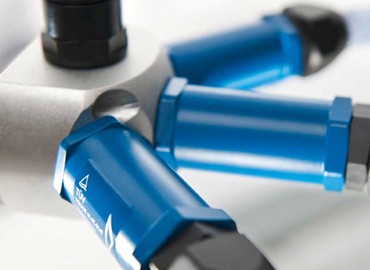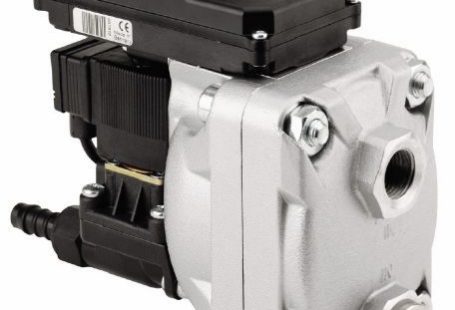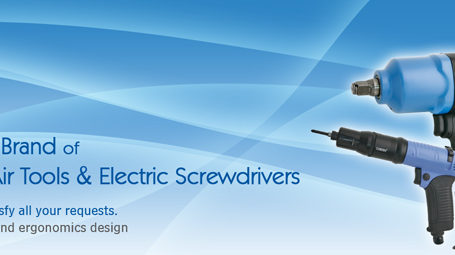You may not realize this, but pneumatics is all around us and we encounter it through our everyday life all the time.
Whenever you are on a bus, truck, or airplane, pneumatic pressure is being used around you and it’s a core element that makes these vehicles function.
Pneumatic pressure isn’t just found in mechanical objects either, it can also be found in things which can be inflated, such as your car’s tires, pressure sensors and regulators, and anything where there is pressurized air.
Pneumatics are a popular method of making things work and function because they can be incredibly energy efficient and also very long-lasting with minimal maintenance required.
This is why they are such commonplace when it comes to machinery and most industrial equipment and many of the things we take for granted in our everyday lives wouldn’t work without it.
What Is Pneumatic Pressure & How is It Used?
In short, this is the pressure that is exerted by a pressurized gas. There are many various types of gasses which can be used to create pneumatic pressure and one of the most commonly used ones is compressed air.
This can be used to create the shape of a plastic bottle that we use to drink from, provide the cabin pressure on an airplane, and operate the doors you see on a bus.

Alternatively, pneumatic pressure can also be created by inert gasses, which are gasses that do not have chemical reactions under certain circumstances.
The most common types of inert gasses are known as ‘noble gasses’ and they are all colorless, odorless, and have a very low chemical reactivity. In total, there are six noble gasses which are naturally occurring and they are argon (Ar), helium (He), krypton (Kr), neon (Ne), radon (Rn), and xenon (Xe).
Air can be pumped into a receiver with the use of a compressor and the receiver will then hold onto this air.
The pneumatic system will then draw from the receiver when it needs to in order to perform its function(s).
What is a Pneumatic Pressure Switch?
This type of switch is to close an electrical contact after the set amount of pressure for it has been reached. These can be found in household well water pumps, an electric gas compressor, and even in the cockpit of airplanes.
What is a Pneumatic Pressure Regulator?
A pneumatic pressure regulators primary function is to maintain constant output pressure. This is to assure that the maximum flow required at regulated pressure is achieved they can come in various forms depending on their purpose such as controlling regulated pressure with close tolerances.
How Is Pneumatic Pressure Used in Everyday Life?
You could be really surprised with the sheer number of things which operate on pneumatic pressure that you unknowingly use or pass by throughout your everyday life. It’s simply everywhere, from when you enter public transportation, go into certain buildings, see balloons, experience a dentist’s drill, walk past someone using a jackhammer,
- Doors for public transportation
You may have heard the sound of the doors on the bus closing thousands of times in your life and thought nothing of it. Well, now you can look at those doors entirely different because they are utilizing pneumatic pressure to create the operation of them opening and closing which results in the release of air.
- Brakes on heavy vehicles
With such a huge weight behind them, the regular brakes you find on your car won’t be enough to slow down these heavy objects. Air brakes use pneumatic pressure to apply more force to the braking system which can then allow a heavy vehicle to come to a stop.

- Bike pumps
Every time you pump up a bike tire you are creating pneumatic pressure when you transfer air into it. This air is then retained by the tire and gradually releases over time as the tire experiences wear and tear.
- Vacuum Pumps
Ever seen an espresso machine in action? That is using the most common type of vacuum pump which is known as a ‘rotary vane pump’. This type of pump is very popular in the hospitality and automotive industries and is the driving force behind the air that gets pumped into making an espresso.
- Fire Extinguishers
Some fire extinguishers use argon mixed with carbon dioxide (C02) to aid in putting out fires. This is because argon is very stable when it’s used against higher heat applications such as fires where there is lithium or magnesium present.
- Exercise Equipment
Did you know that some stationary bikes and treadmills use pneumatic pressure? These machines utilize air pressure to provide you with resistance. So next time you are on the treadmill and you configure the settings to raise the incline, that machine may be using pneumatic pressure to create this effect.
- Pressure Cookers
A pressure cooker uses pneumatic pressure with the use of two valves. These valves are for regulating the pressure and relieving the pressure accordingly so that the cooker doesn’t explode. A pressure cooker can be used to cook large amounts of food at a faster pace as opposed to cooking without pressure.
- Tube Systems
These aren’t as common as they used to be, but for a while, pneumatic mail tubes were a thing. You may have seen these in movies or perhaps in a bank, and pneumatic mail tubes were used to transfer letters within large buildings.

While the use of transporting mail this way has become obsolete with the advent of fax machines and then emails, pneumatic tube systems are still used today to transport small objects in a local environment.
- Jackhammers
We have probably all walked past a jackhammer in use at one point or another. The driving force behind this is usually compressed air and as you can imagine by the noise it generates, there is a lot of it required.
What Do You Know Now?
As you can see, the use of pneumatic pressure in everyday life truly is everywhere and unless you know about it, which you should now, it can easily just pass by you like anything else.
Now that you know more about pneumatic pressure and how it’s used in so many things you encounter throughout your life, you may never look at a bike pump, espresso machine, or the doors to the bus in the same way ever again.
The examples listed above only scratch the surface of things which use pneumatic pressure and there is so much more that we haven’t listed. With your new-found knowledge on pneumatic pressure, how many more things can you think of which use it?




1 comments On All About Pneumatic Pressure
Pingback: F1ntastic 2020 Belgian Grand Prix Race Review - F1ntastic.com ()